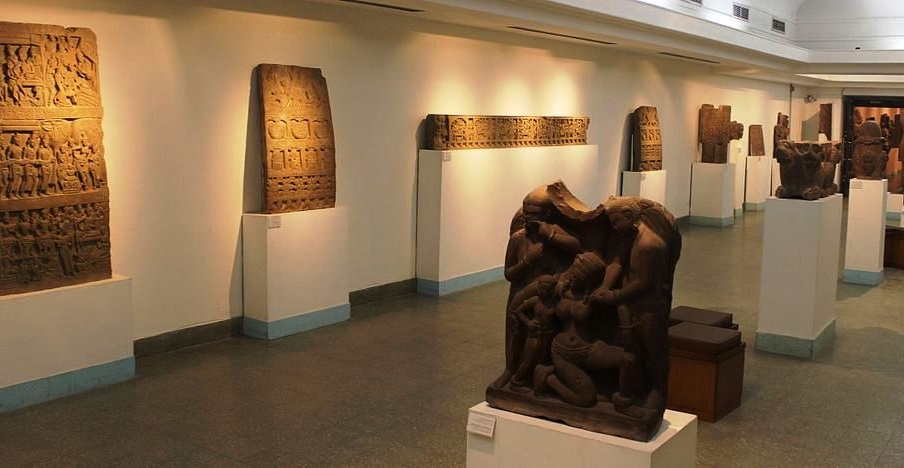In our world dominated by big data, museums as repositories of timeless art and history are continuously making news as footfalls of visitors, clicks on webpages and social media sites go running into millions. Or zillions, as a twenty-something Instagrammer would say before the Covid-19 locked down left us indoors.
A quick look at figures reveals fascinating insights as museums around the world have become more open to welcoming global visitors. In fact, these institutions have become powerhouses in themselves. The Louvre in Paris has over 10 million visitors each year; the British Museum receives over 6 million visitors; not to be left behind, the National Museum of China in Beijing registered 8.61 million visitors in 2018.
Across the Atlantic, the might of museums continues to unfold with 7.36 million people visiting the Metropolitan Museum of Art in New York in 2018. The Met, as it is popularly known, is hailed as one of the largest, finest art museums in the world. In Washington DC, the National Air and Space Museum was the most visited Smithsonian museum in 2018, with approximately 6.2 million visits.
Closer home in India, Chhatrapati Shivaji Maharaj Vastu Sangrahalaya (CSMVS), Mumbai, formerly known as The Prince of Wales Museum of Western India is housed in a sprawling heritage building. With an eclectic collection of over 70,000 historic and artistic works, CSMVS receives 2,500 visitors per day, over 5,000 during weekends.
At a million-plus annual visitors, Dr Sabyasachi Mukherjee, its director-general, has been credited with reversing the fortunes of maximum city's pre-eminent museum. Back in 2014, he said, “A museum is supposed to be a place for entertainment, along with education and study… people never thought of a museum as entertainment.” For New Delhi's National Museum, a landmark institution along the historic Rajpath, 2016 news reports put the visitor-figure at approximately 700,000.
Though highly respected and admired, museums in Mumbai and New Delhi have a long way to go before they get in the same league as their western or Asian counterparts. In 2017, the global media went ecstatic when Louvre Abu Dhabi was inaugurated as an art and civilization museum by the French President and UAE Royal Family. Located on the Saadiyat Island Cultural District, Louvre Abu Dhabi is spread across 24,000 sq. metres with 8,000 sq. metres devoted to galleries. It is not only the largest art museum in the Arabian peninsula but is set to be a trend-setter in bringing art and history into the world of millennials.
Coming to the millions who throng the Louvre in Paris, they are so busy clicking the ‘Mona Lisa’ they rarely notice the equally historic paintings of masters like Titian and Tintoretto hanging alongside in the gallery. In fact, there are other paintings of Leonardo da Vinci in the adjacent room, some even better than the Mona Lisa, if art historians are to be believed.
Experts like Gail Dexter Lord, founder of advisory firm Lord Cultural Resources, have likened the Mona Lisa painting to a pilgrimage piece. In an interview, he compared the tourists drawn to the Leonardo portrait with medieval Christians who trekked hundreds of miles to visit cathedrals housing tombs of their saints.
In Udaipur, the lake-city in south of Rajasthan, at The City Palace Museum visitors from all over India are seen thronging different courtyards within the Mardana Mahal (palace for the royal men). Before the Maharana Pratap Kaksh (Room), they bow their heads, touch the walls and doorway in reverence. Their eyes and folded hands reveal the veneration for this leader of Mewar in the 16th century CE, whose armoury and weapons are displayed with simple adornments and garlands of fresh flowers. “I see the City Palace Museum leading the development of our city of Udaipur,” said Shriji Arvind Singh Mewar, chairman and managing trustee of the Maharana of Mewar Charitable Foundation.
Dr Mayank Gupta of the Foundation pointed out “in 2016-17 The City Palace Museum had over 1 million visitors for the first time since its opening in 1969.” The number of visitors is growing with each passing year. “Our responsibilities are also growing,” said Shriji, adding, “We are in the process of building a world-class museum but rooted in our ethos and ancient culture.”
The developmental process, underway for two decades, has seen several new galleries and exhibitions being curated by professionals from all over the world. Plowden; Smith from the UK are currently installing the ‘arms and armory’ exhibition at Saleh Khana, one of the oldest halls of the City Palace Museum under the curatorial guidance of Howard Ricketts, armory expert from London. “The Museum showcases not merely objects that have been meticulously restored or conserved; they reflect our pride, our identity,” Shriji said, “Without pride in our history, what are we passing on to future generations?” Indeed powerful thoughts that outline the complex metaphor of museums as repositories of history and heritage, memory and emotions, ideas of progress and sustainable development.
For global travellers who arrive in millions at the Louvre to click photographs of Mona Lisa, there is a palpable sense of ‘cultural attainment,’ of having been there in Paris and done it. Contrast this accomplishment, with groups of schoolchildren who come to museums in heritage-cities, such as Udaipur, and wordlessly express their respect for historical personalities like Rana Pratap. Some stand as if praying with hands folded, others kneel to touch the hallowed ground with their forehead: signs of piety and pure emotion that big data may be unable to capture on the might of museums in our times.
(Ranjit Bhushan is an independent journalist. In a career spanning more than three decades, he has worked with Outlook, The Times of India, The Indian Express, the Press Trust of India, Associated Press, Financial Chronicle, and DNA).




















